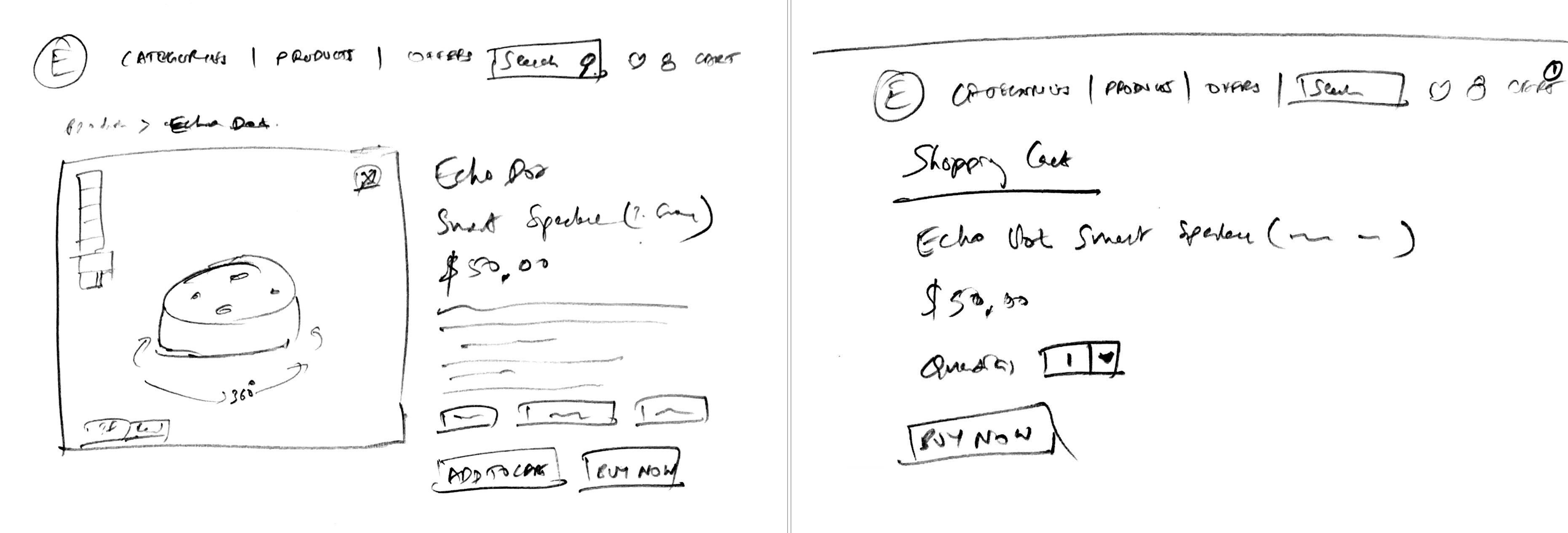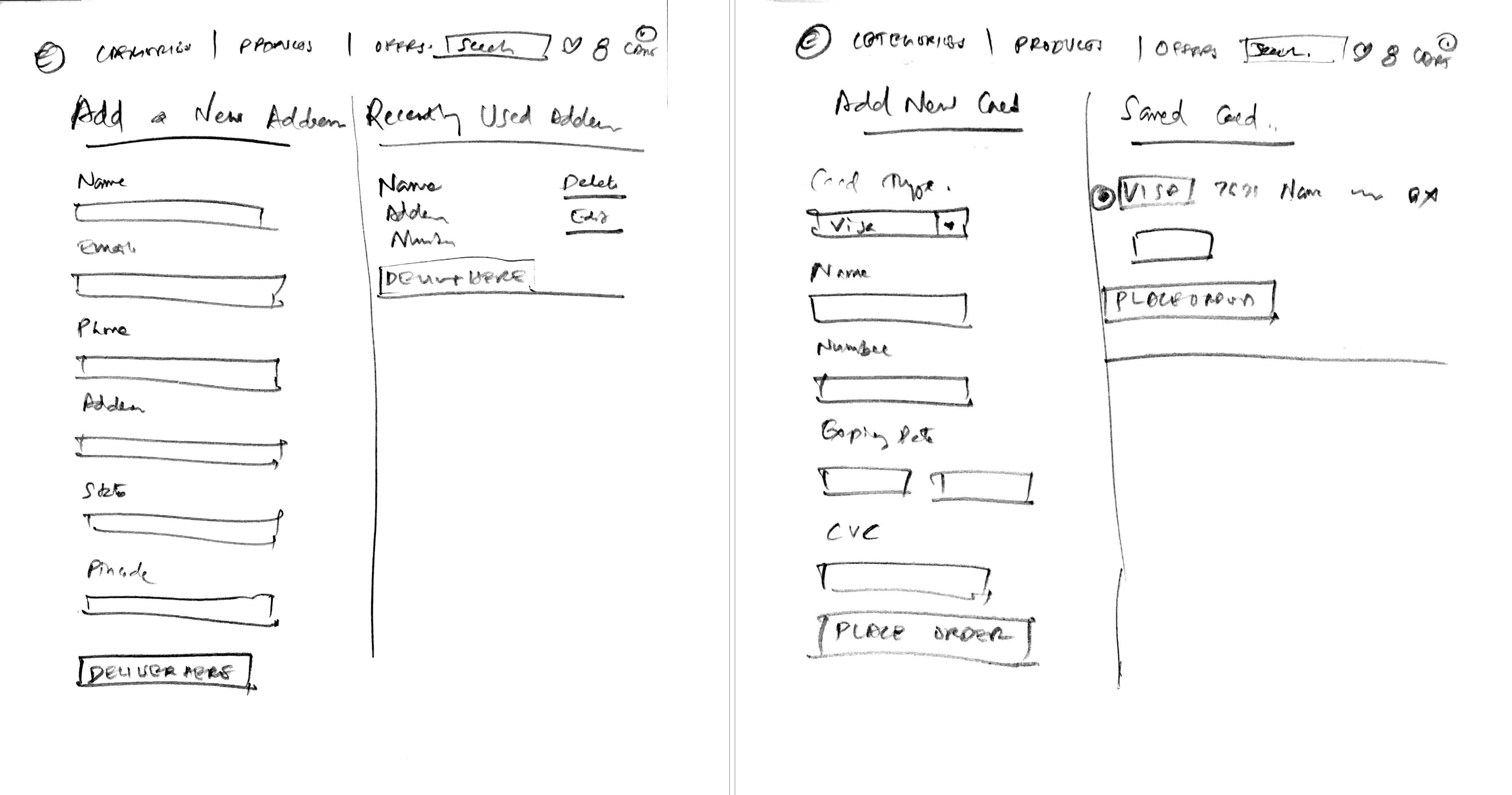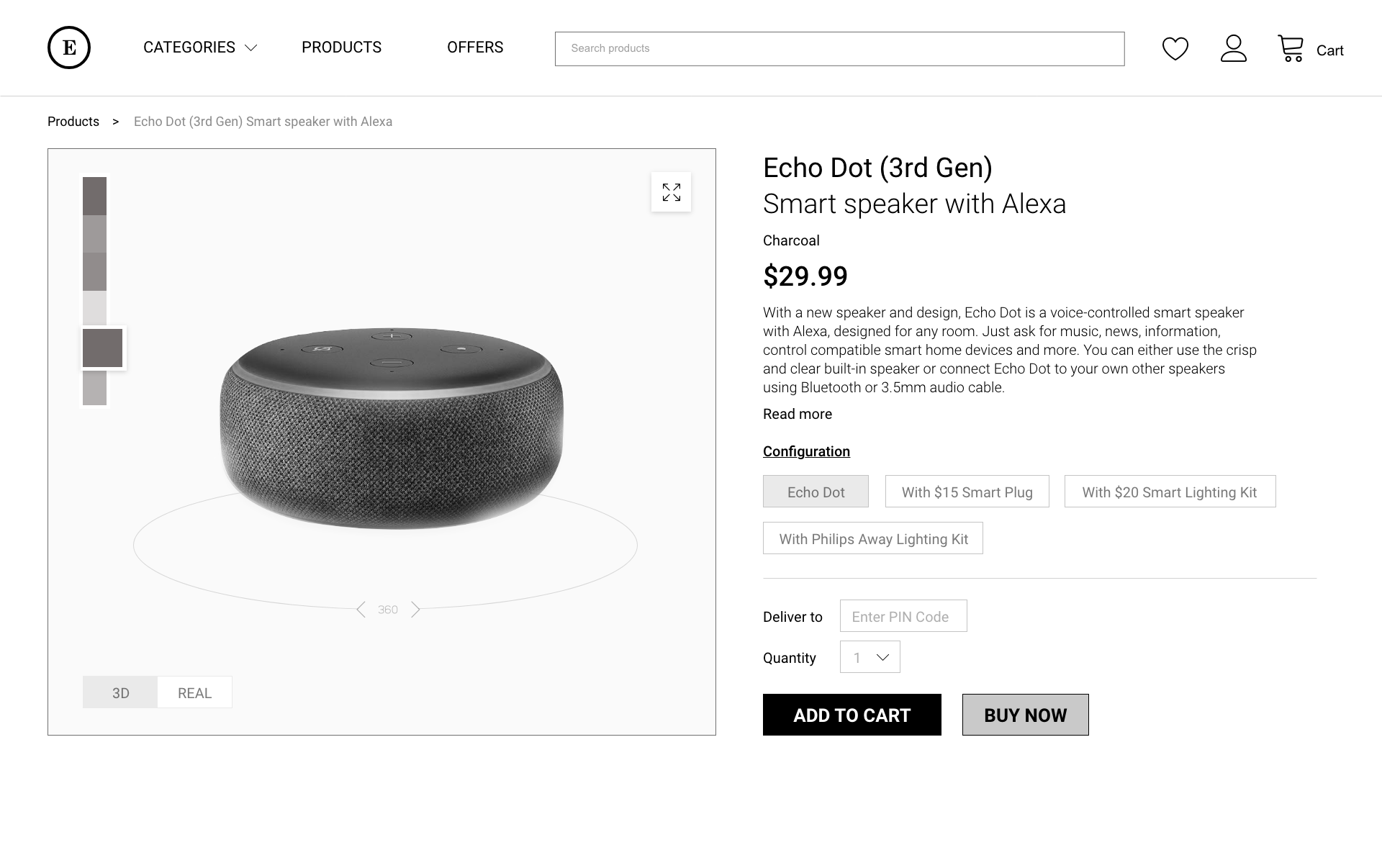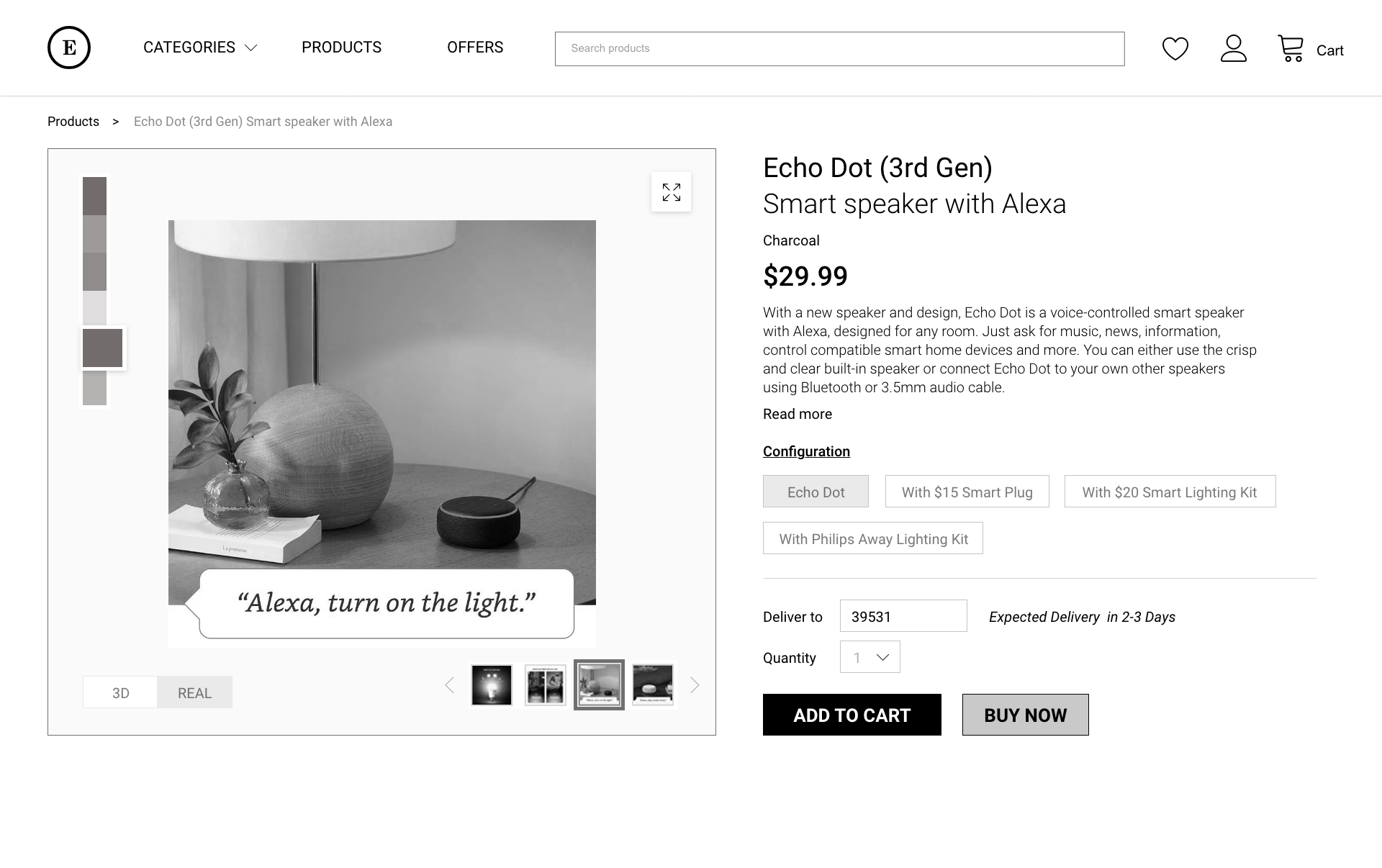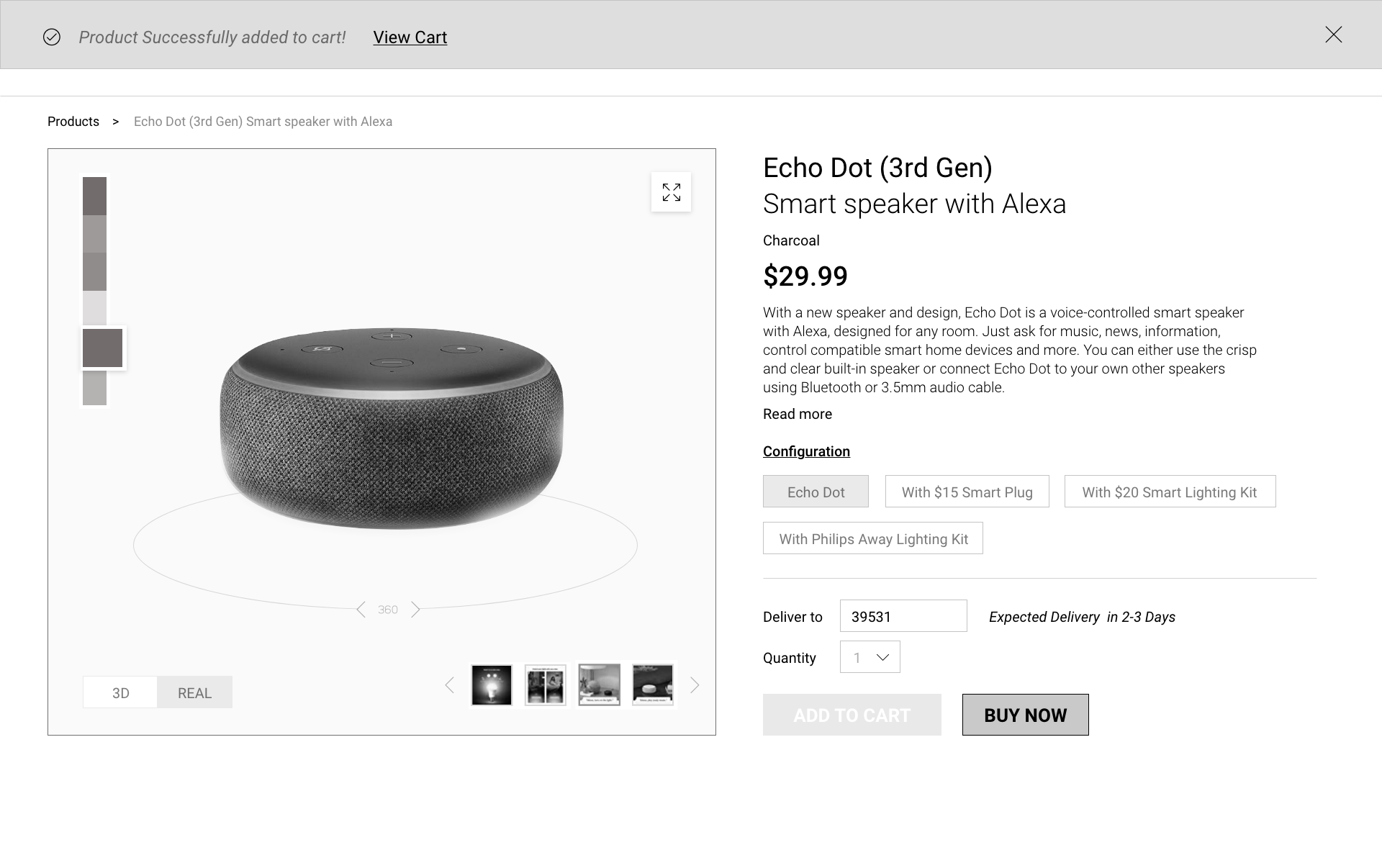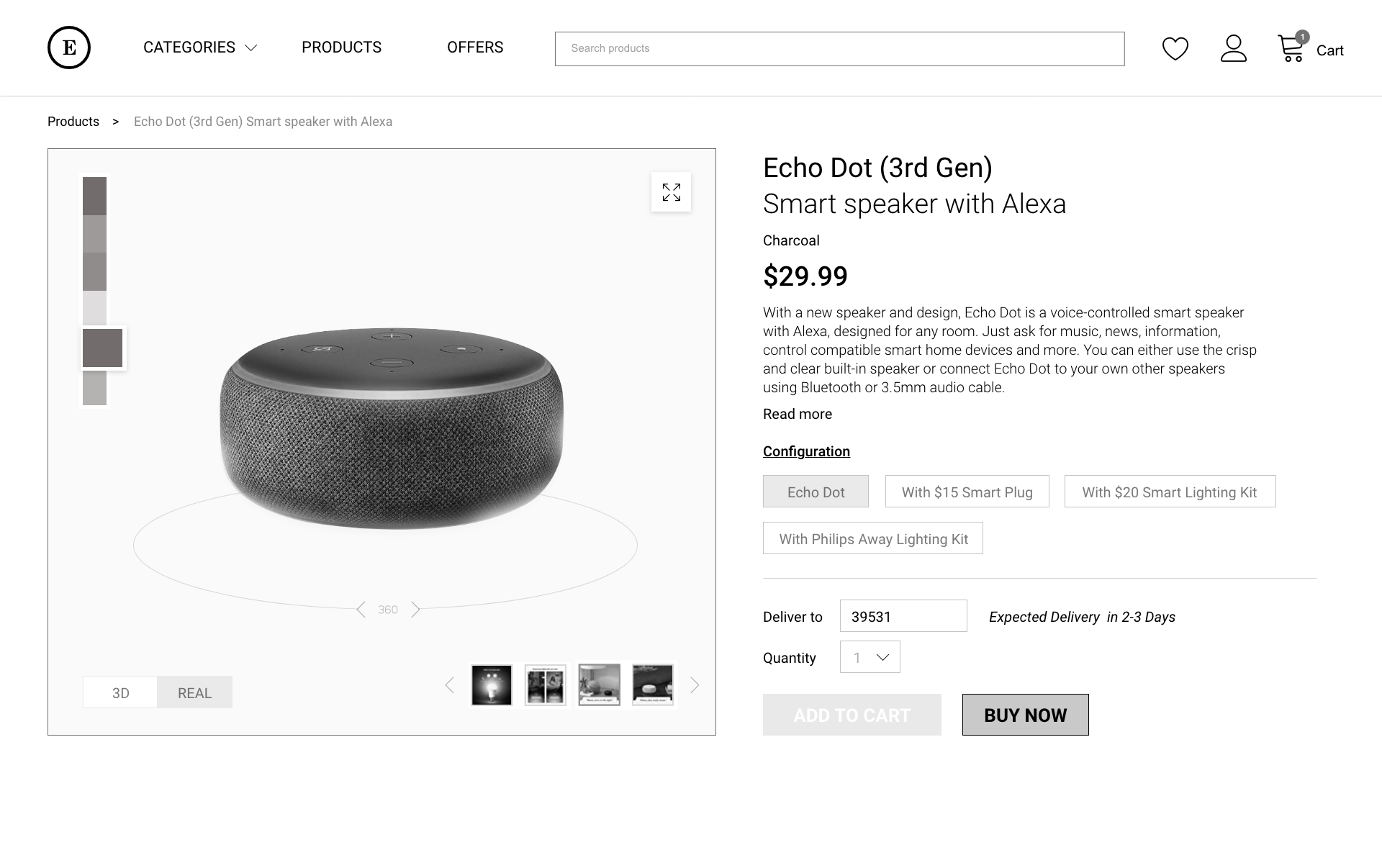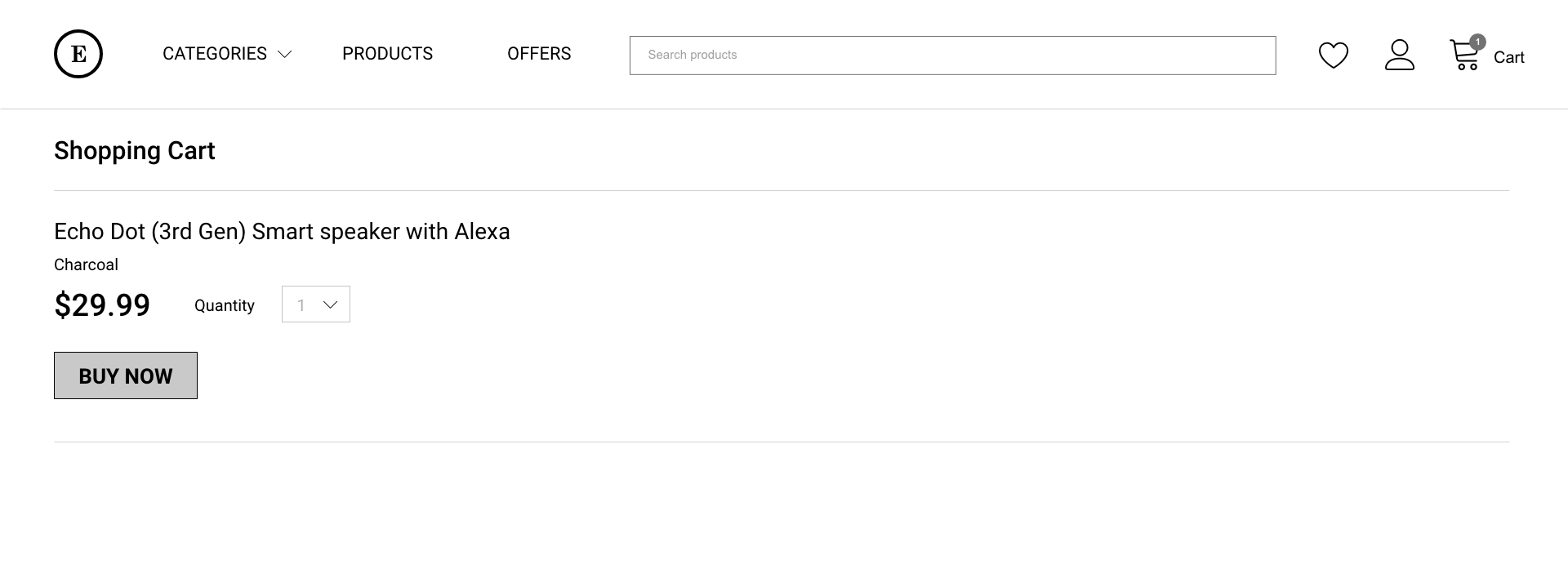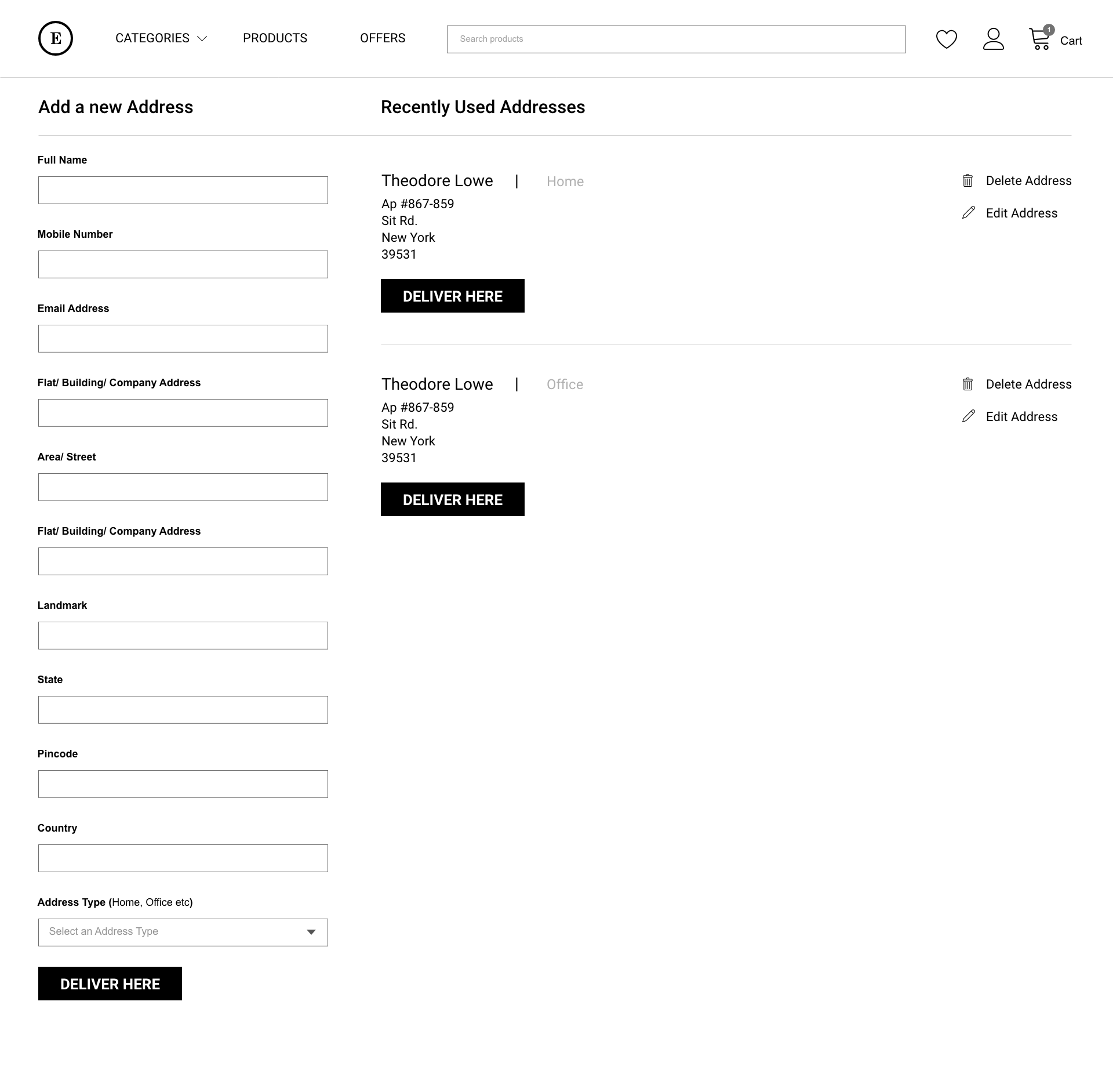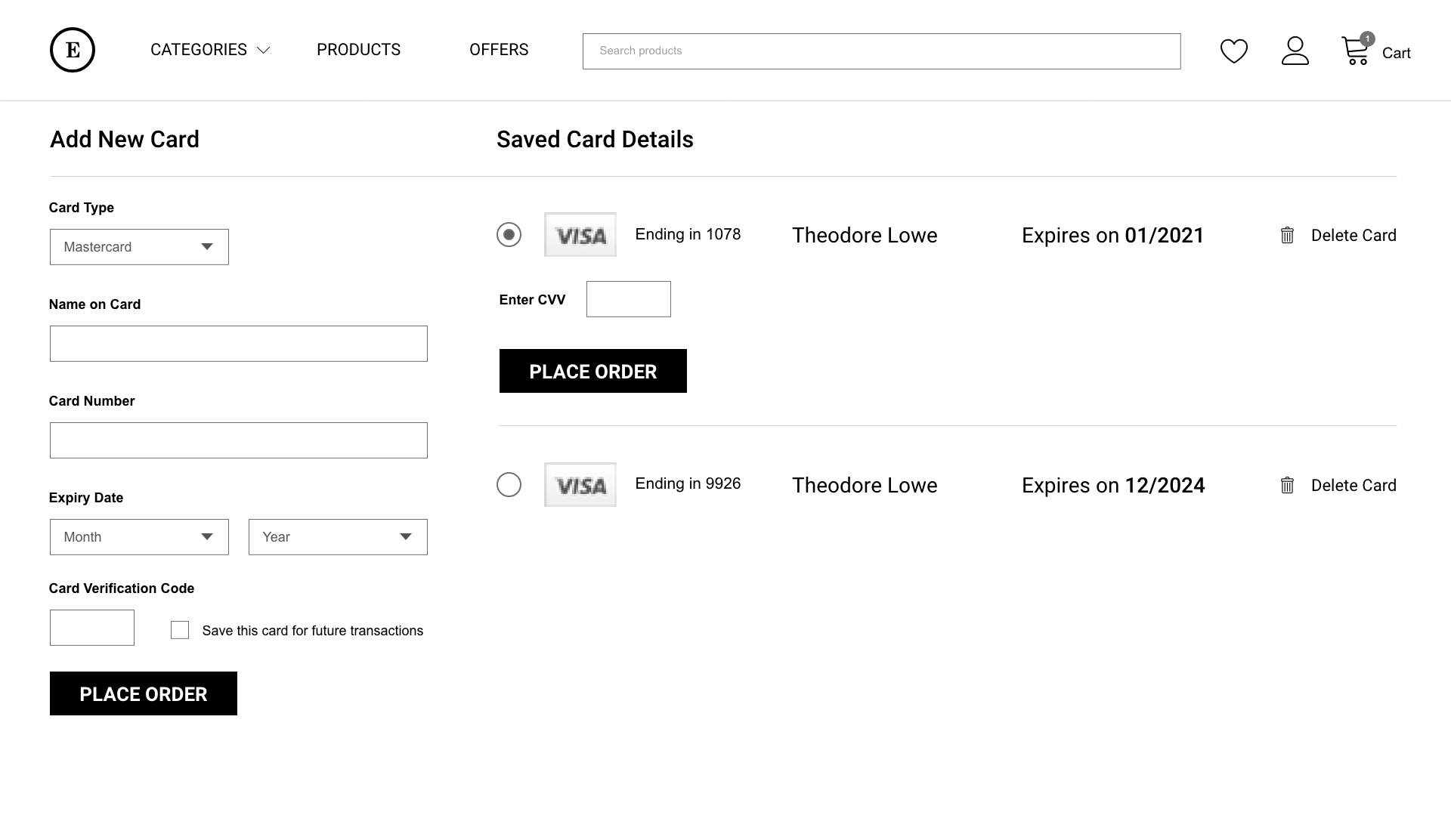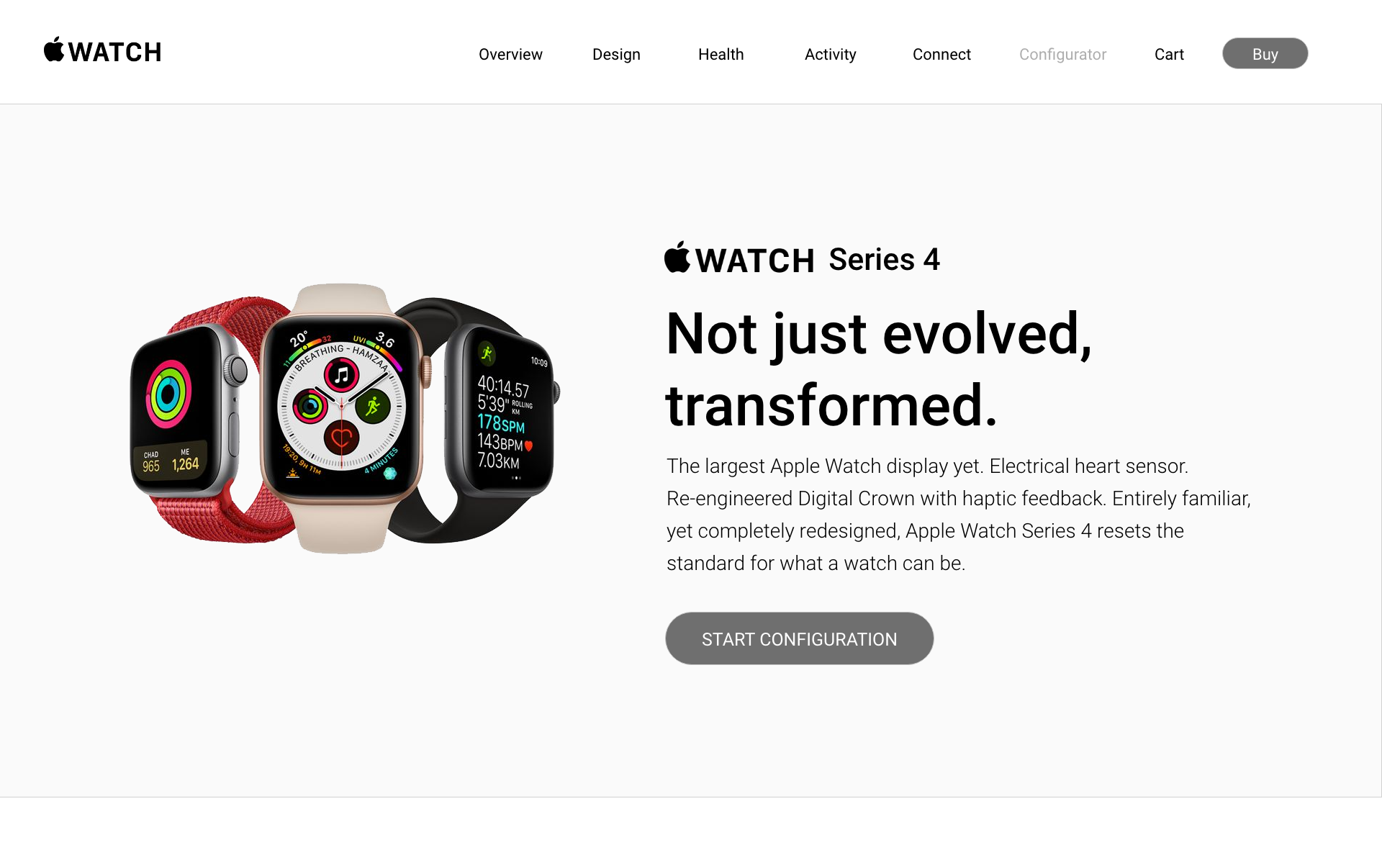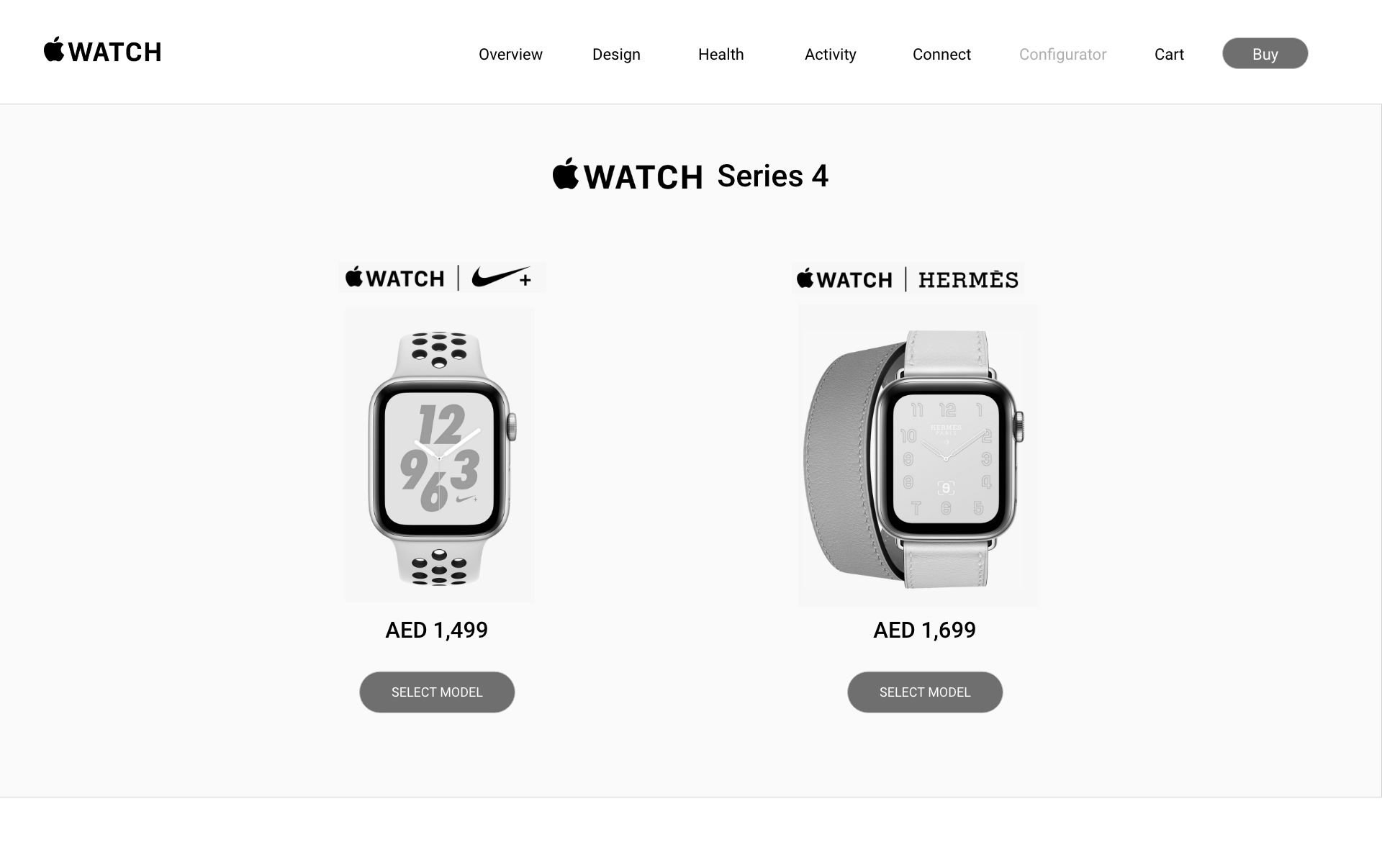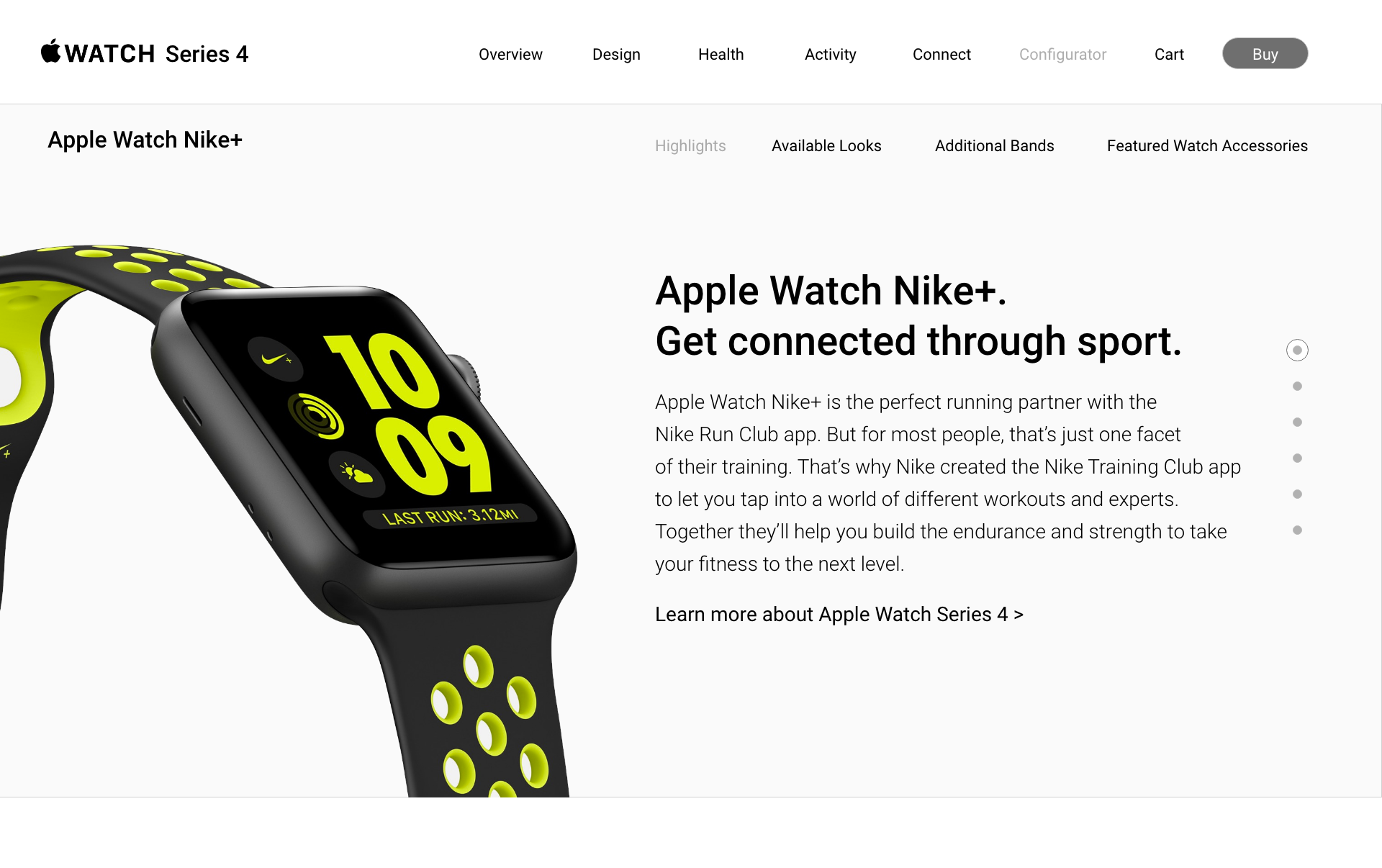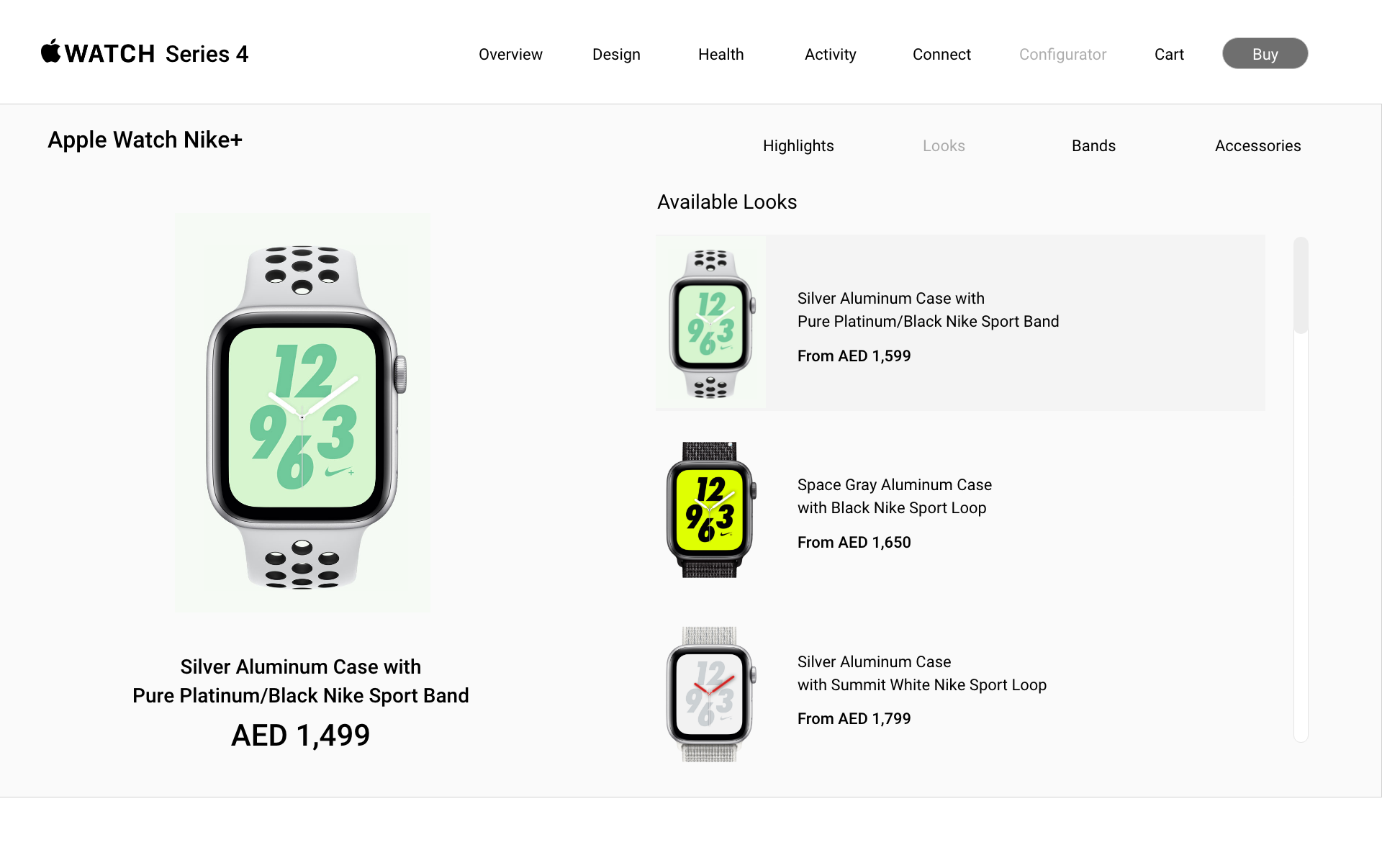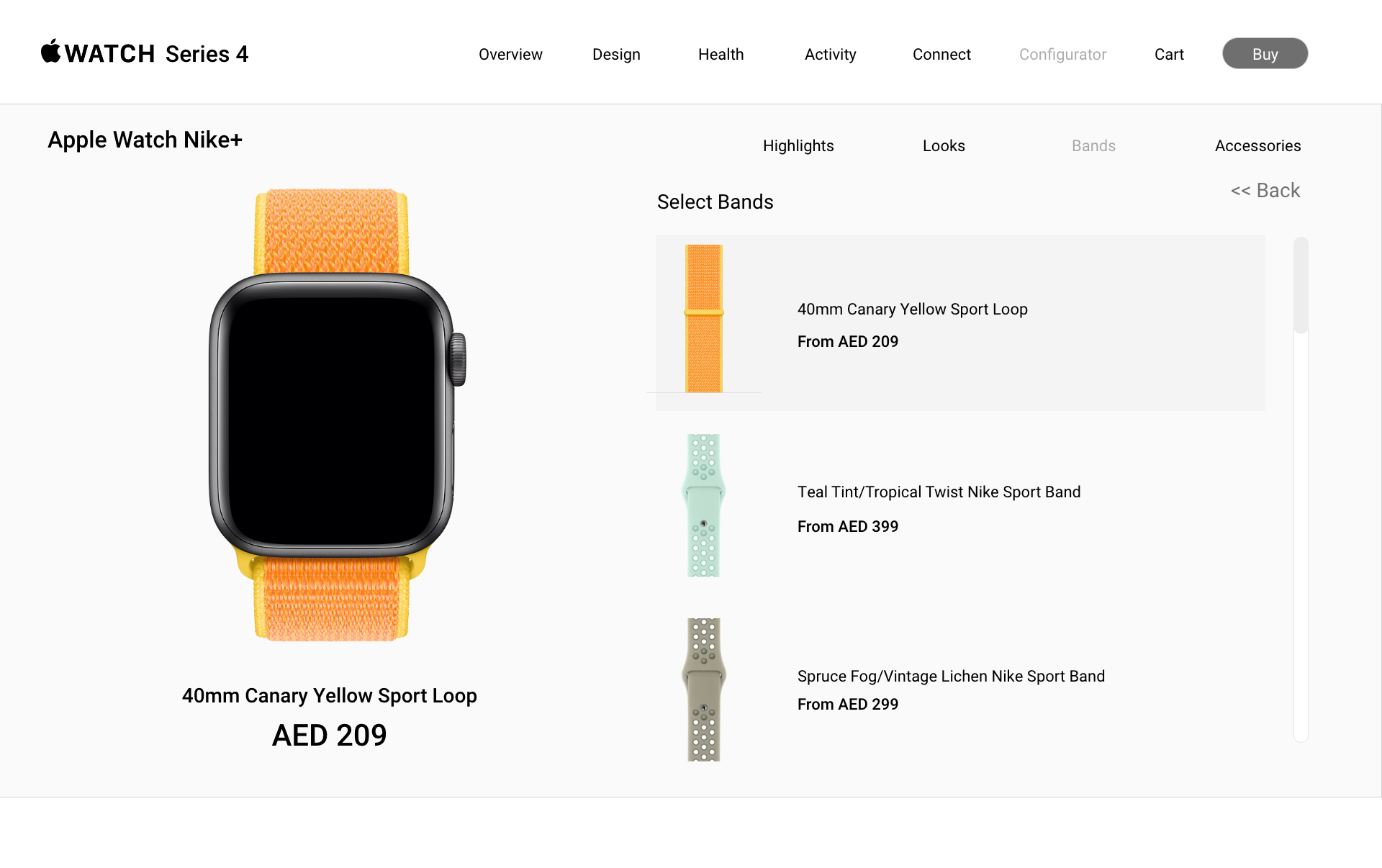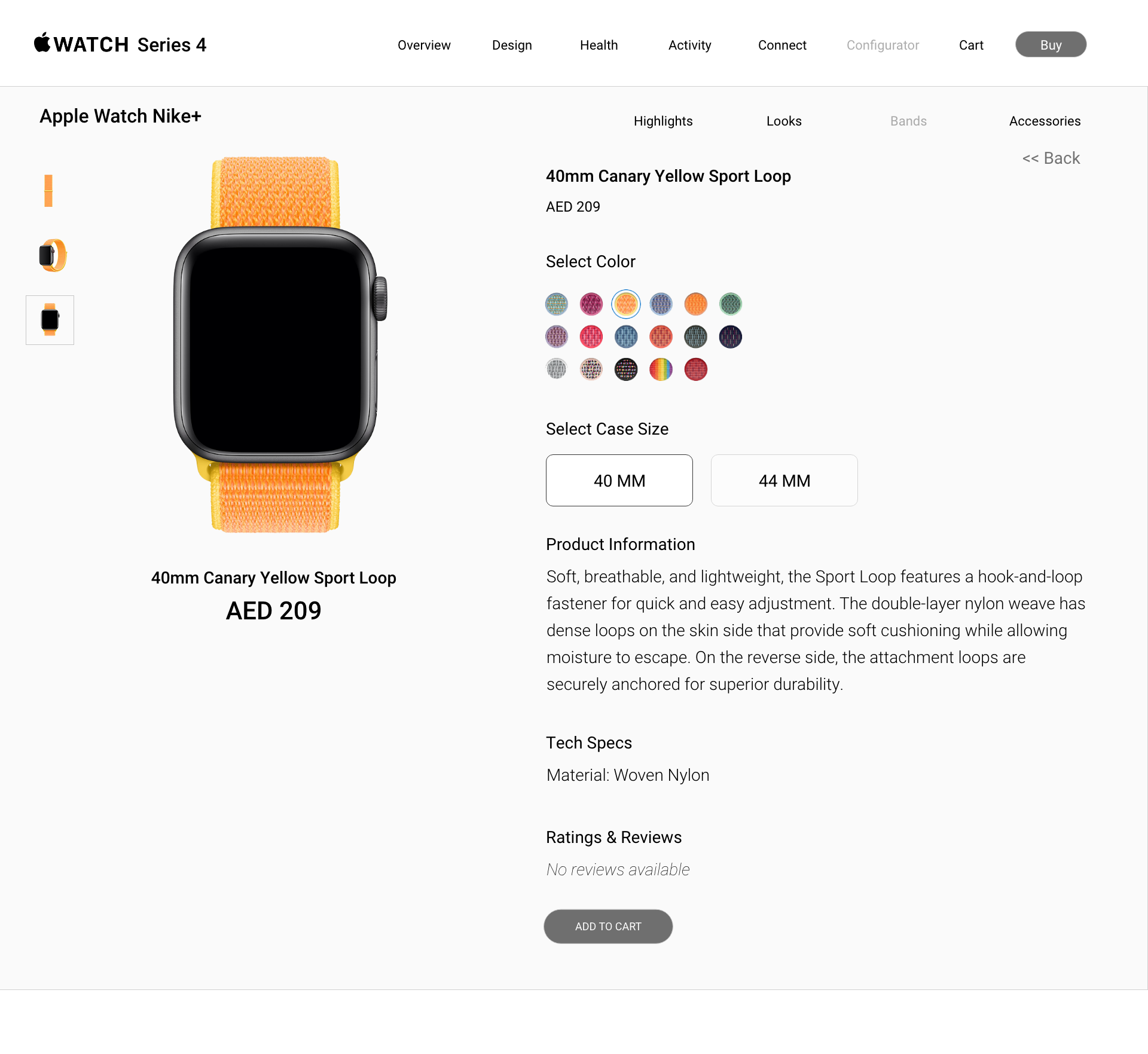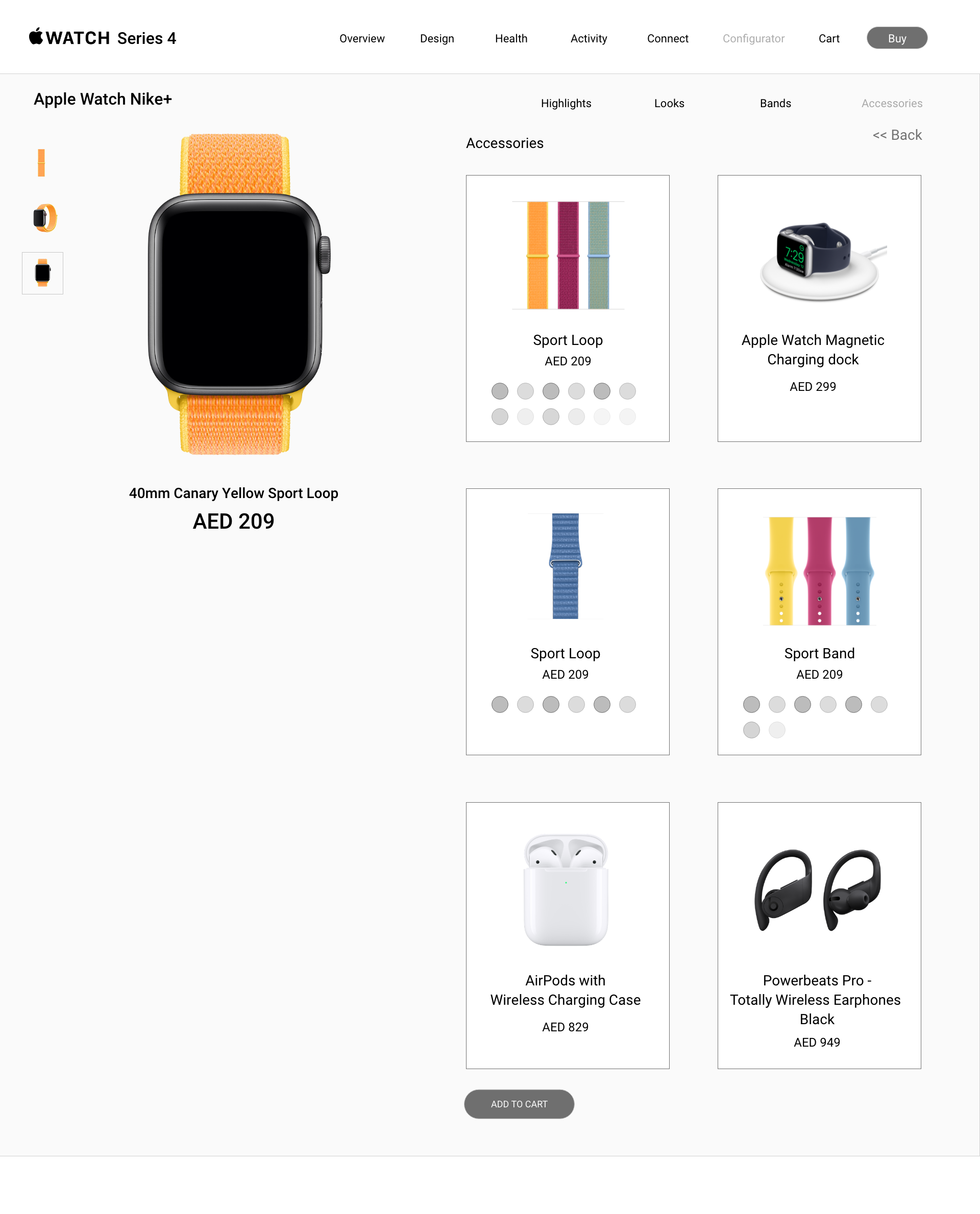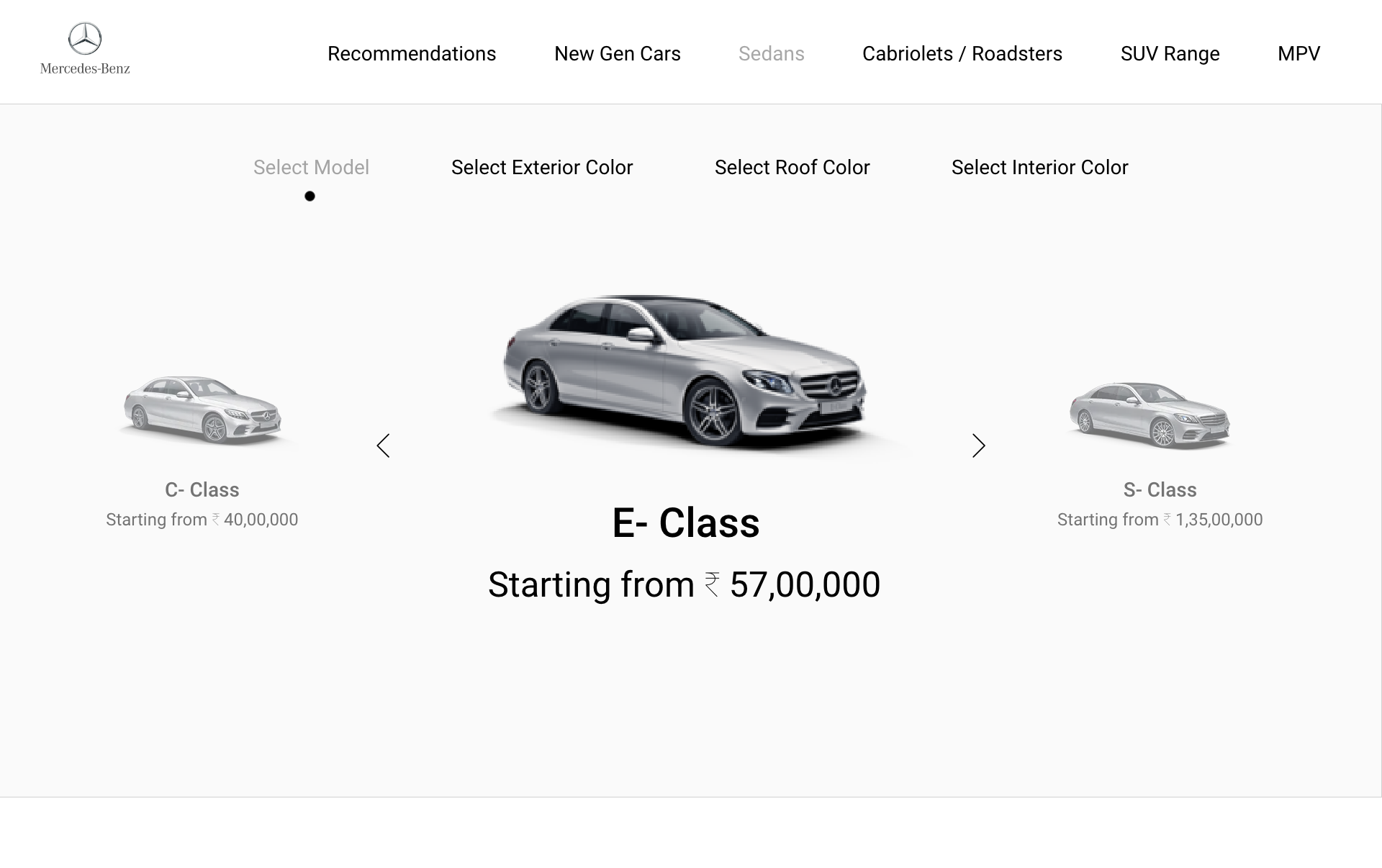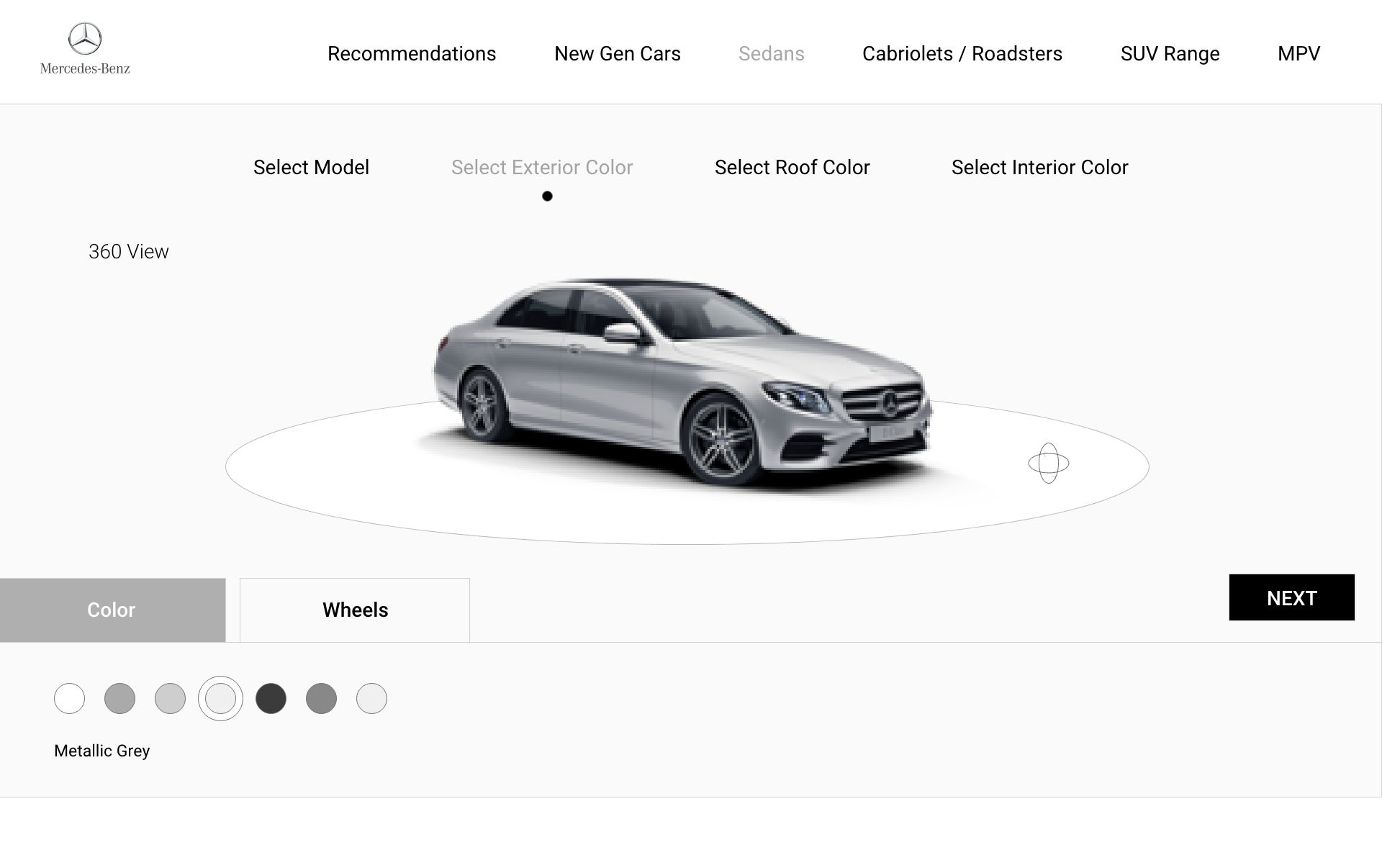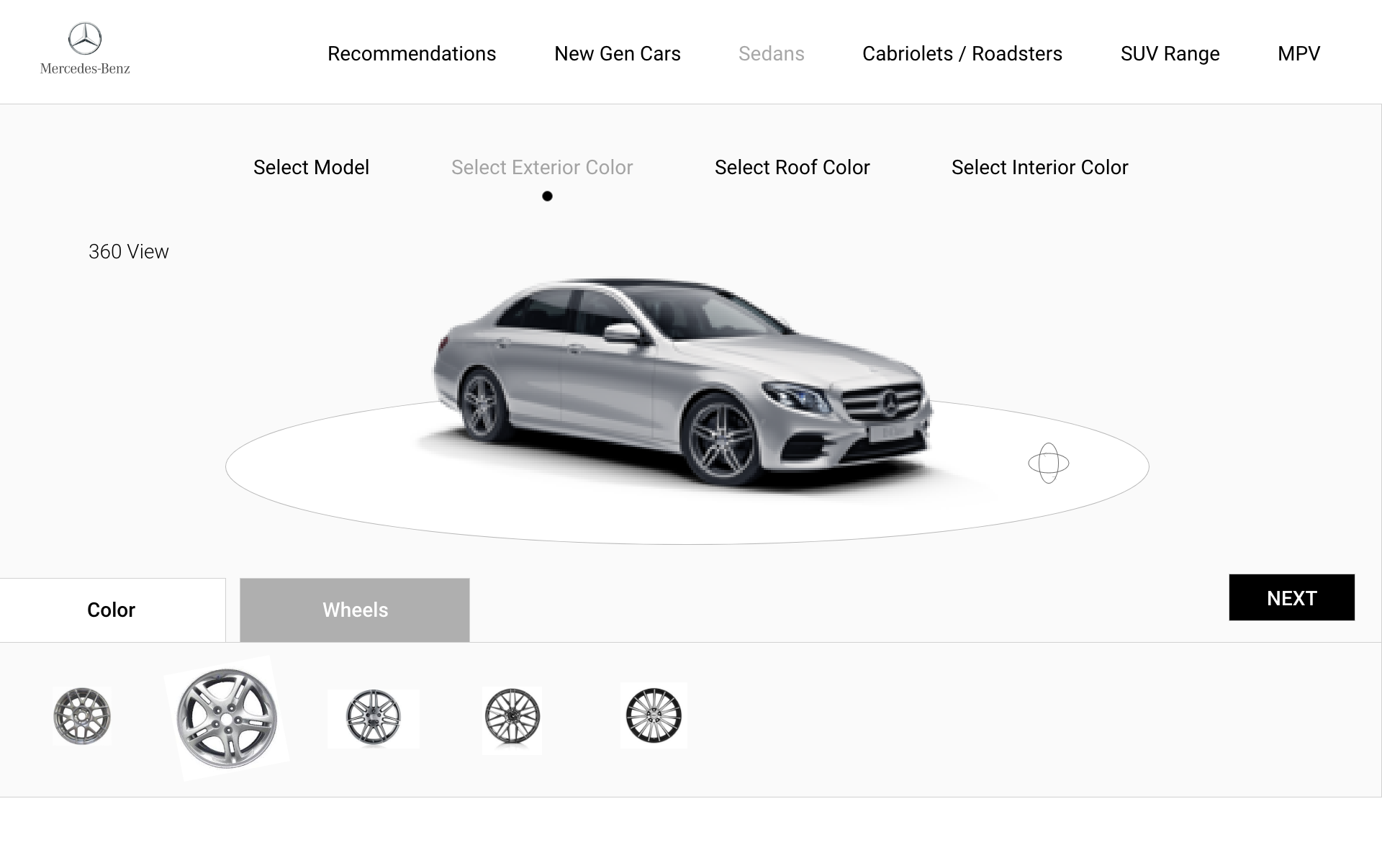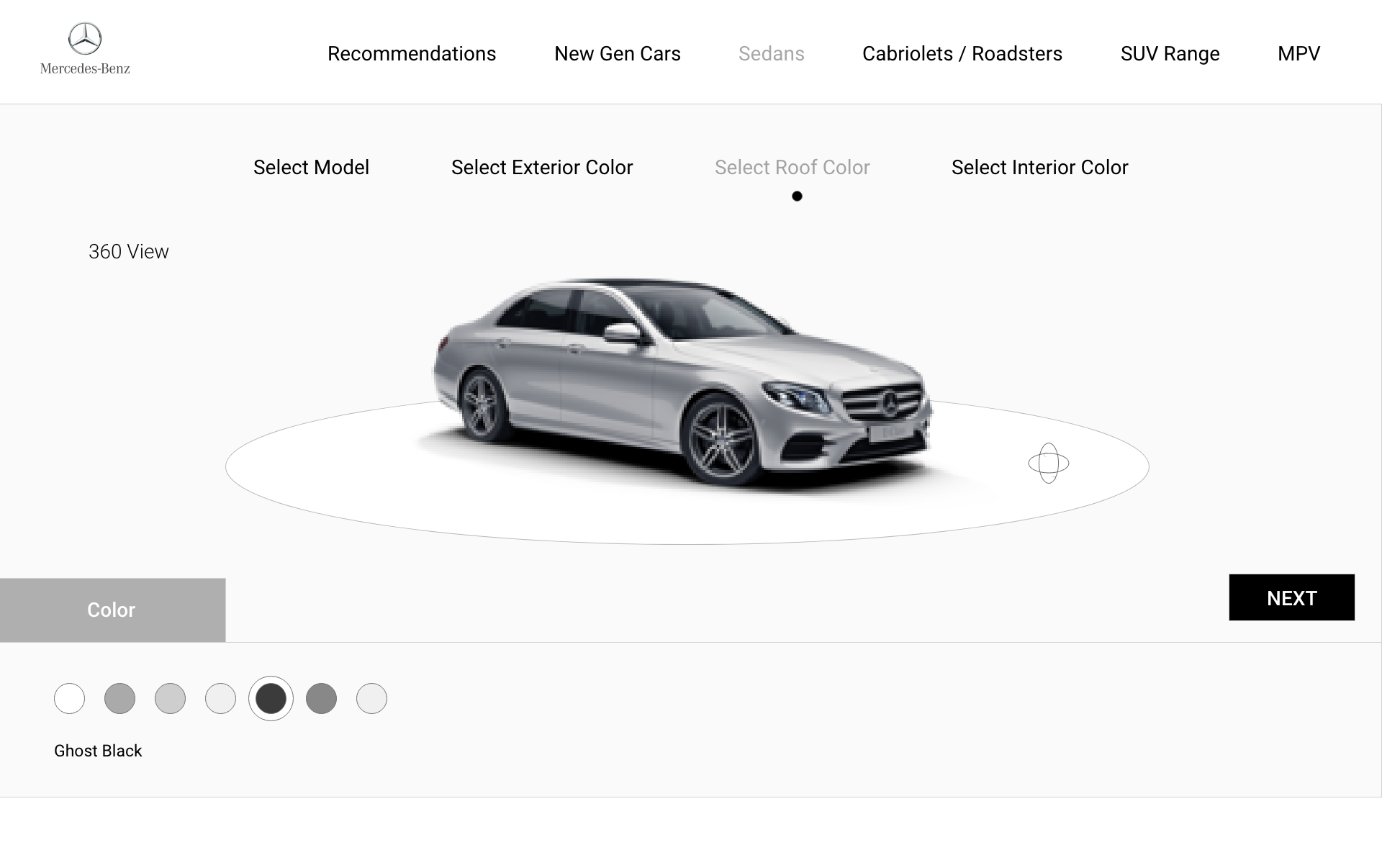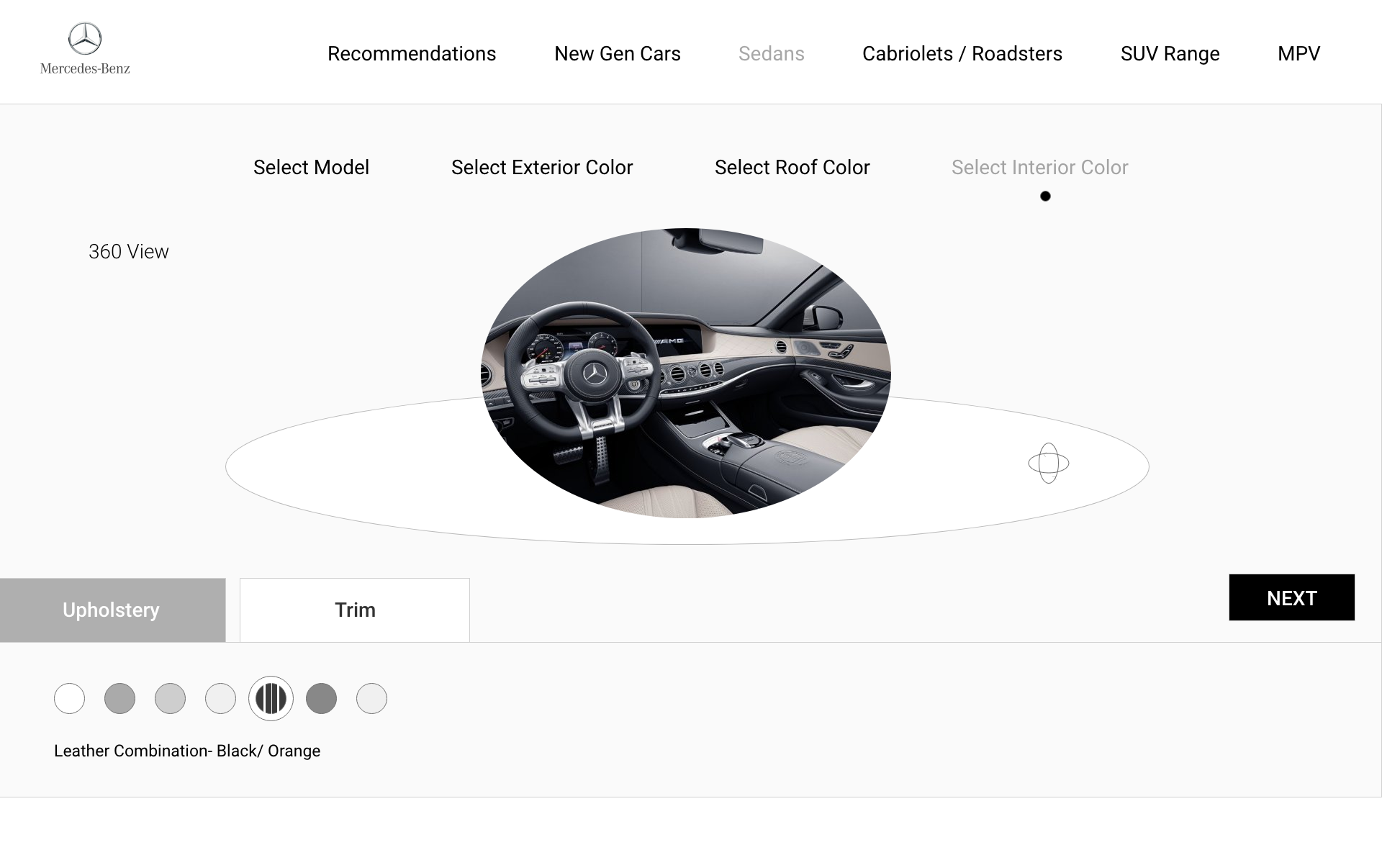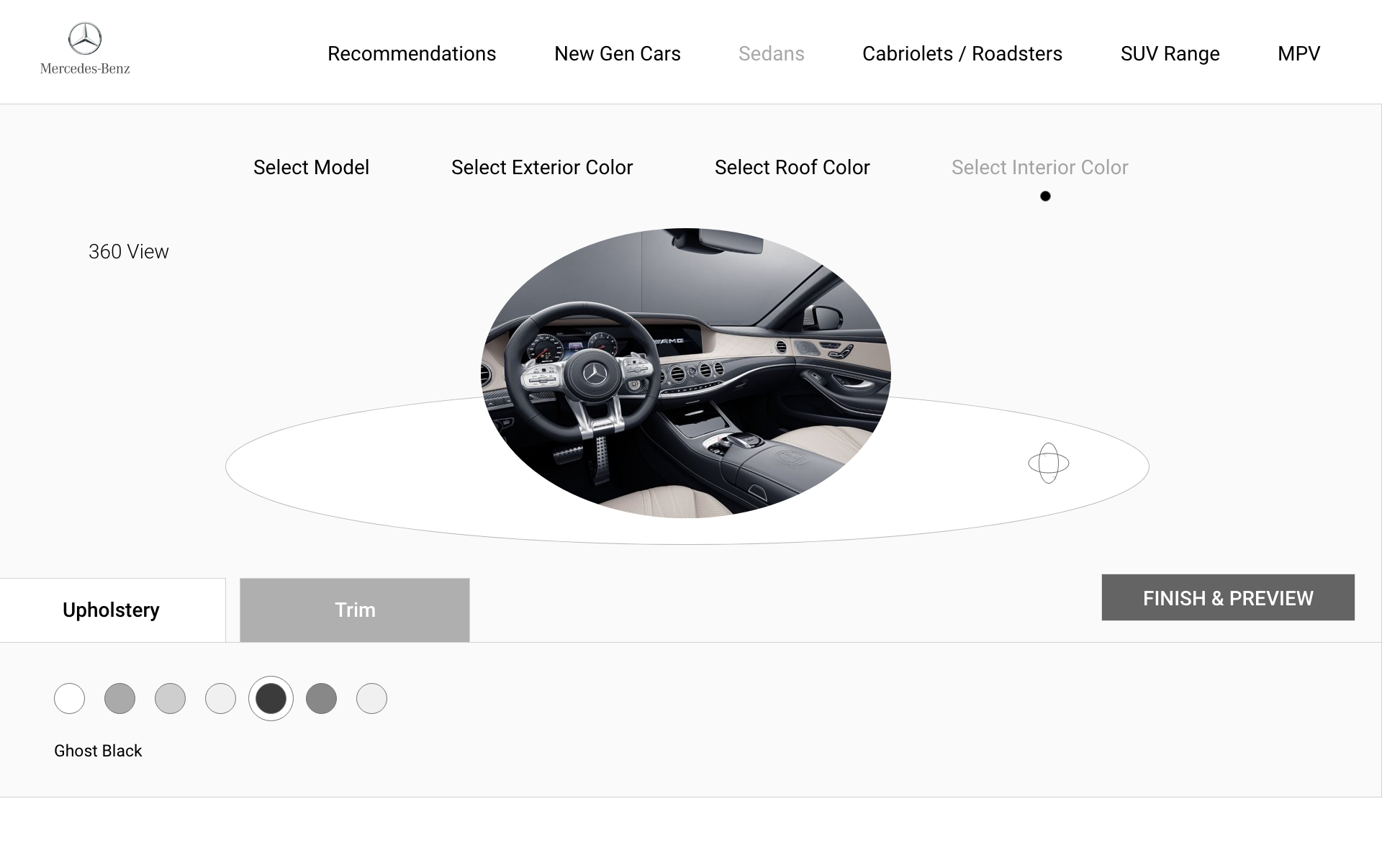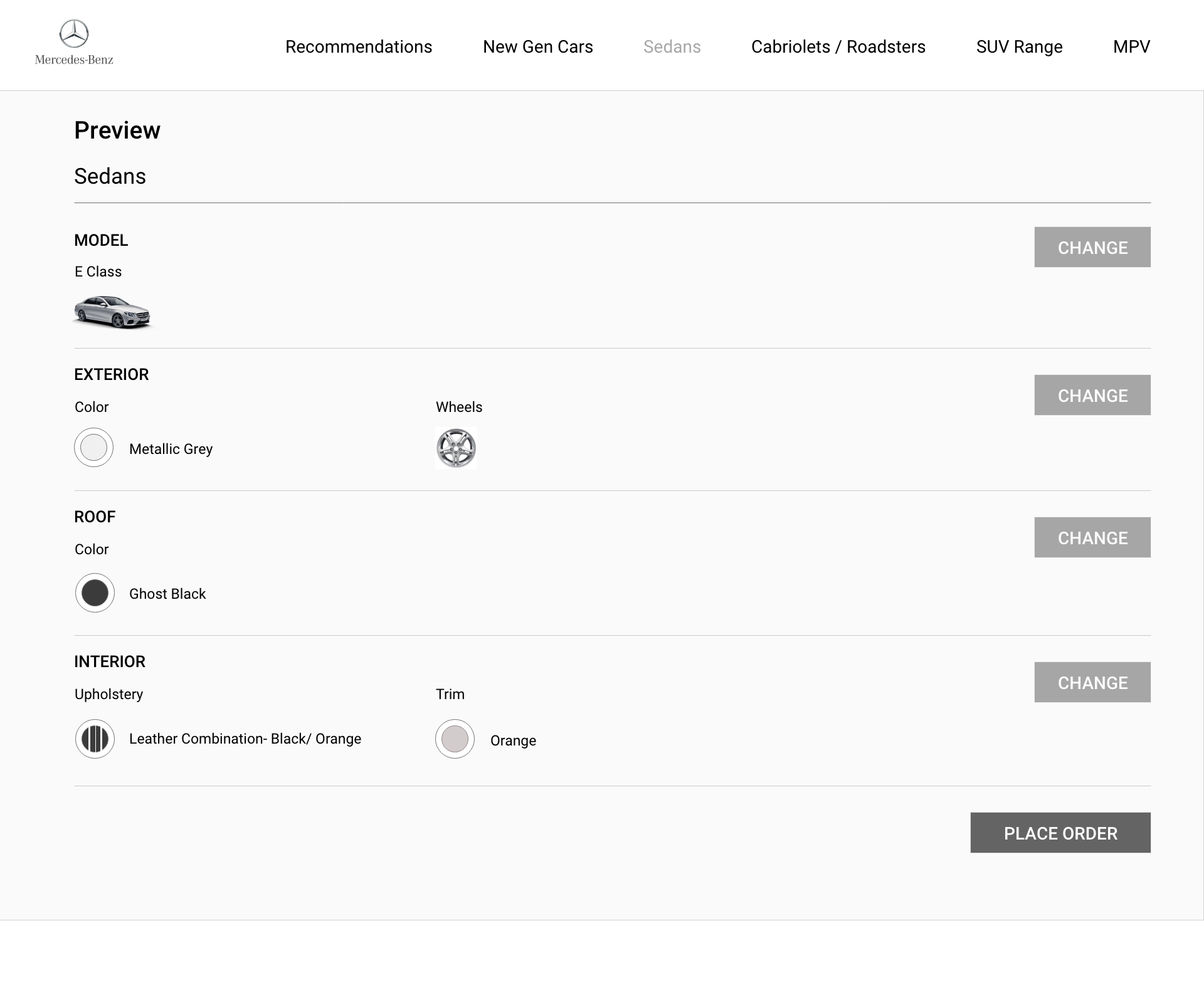A product configurator is a computer program that helps the user specify a product by allowing to choose from all available options. This allows customers to configure a product the way they want.
By using the configurator a complex product can be formalized into a simple to understand system that allows the user to specify the item of their choice, specifying options like color, size, position or accessories.The configurator usually exists for two reasons: to inspire customers to explore a product, or to help them configure an existing product to match their needs. View live prototype
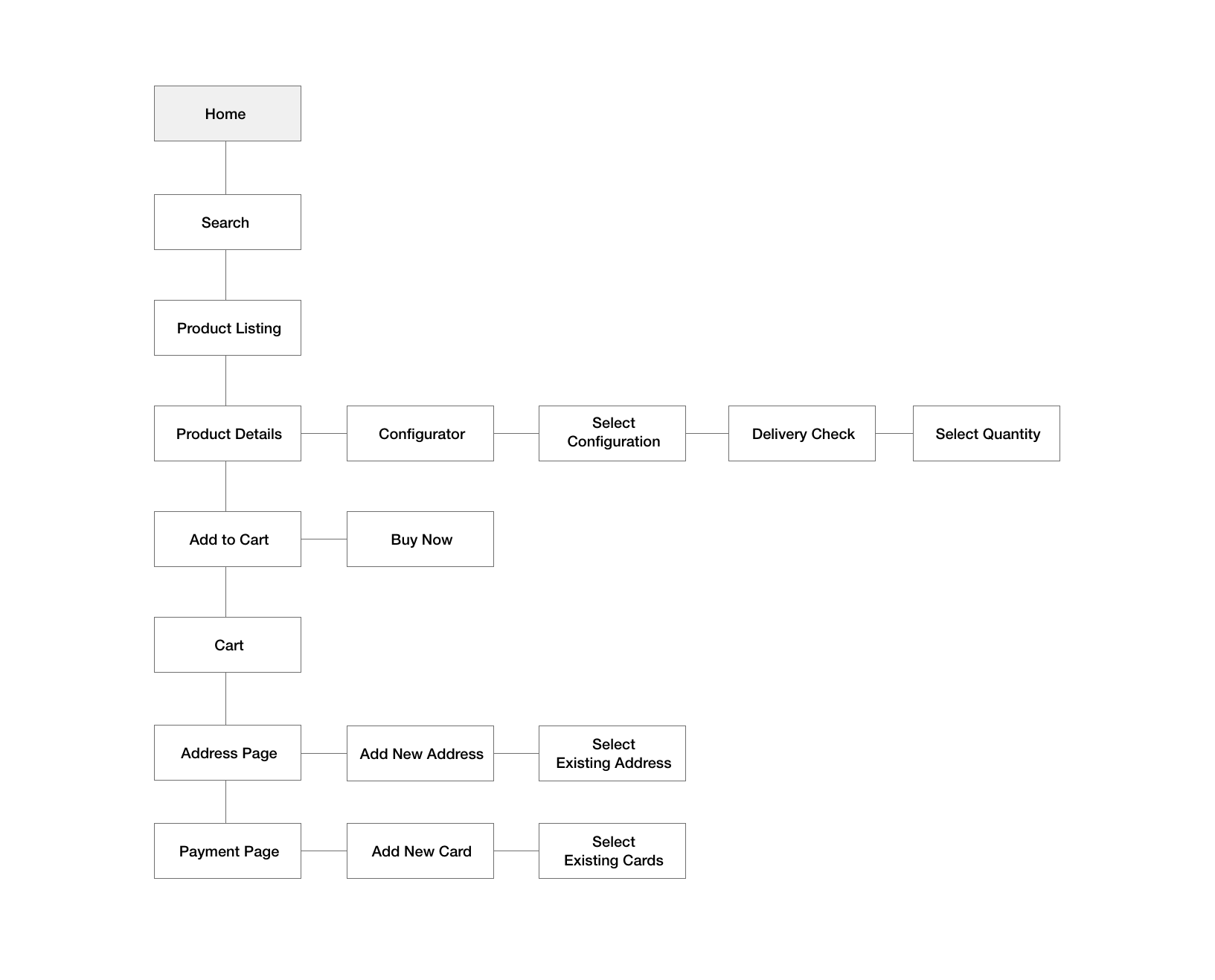
In human–computer interaction, paper prototyping is a widely used method in the user-centered design process. It helps come with a design that meets the user's expectations and needs. The method was used to understand the primary tasks of the user at any given point of the screen. This led to the formation of the information architecture- defining the primary, secondary and tertiary tasks of the user and their progressive disclosure.
This is a set of hand drawn sketches I made to illustrate what I had in my mind.
